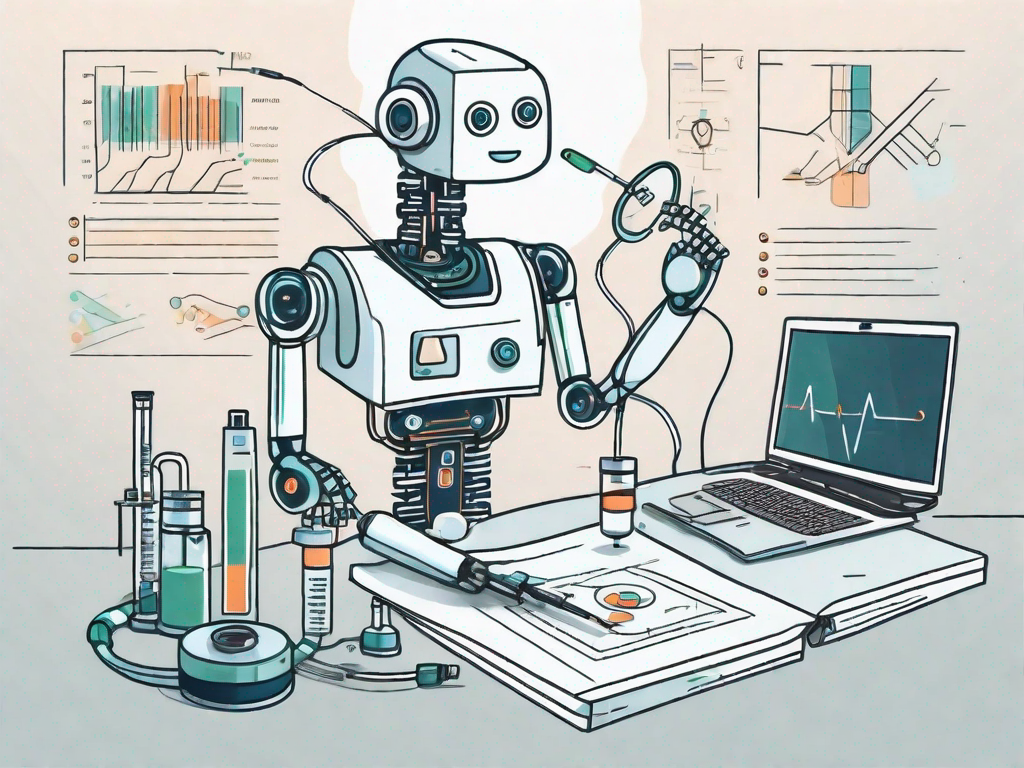
In today's digital age, advancements in technology continue to revolutionize various industries, including the healthcare sector. One such technological innovation that is gaining momentum is Robotic Process Automation (RPA). By automating repetitive tasks and optimizing processes, RPA has proven to be a game-changer for healthcare organizations, leading to improved efficiency, enhanced patient care, and reduced operational costs.
Before delving into the impact of RPA in the healthcare industry, let's first define what Robotic Process Automation entails.
Robotic Process Automation, often referred to as RPA, is a technology that enables the automation of mundane and rule-based tasks by employing software robots or "bots." These bots mimic human actions, executing repetitive tasks with speed and accuracy, while freeing up human resources to focus on more complex and critical activities.
With the increasing demand for efficiency and productivity, RPA has become a game-changer in various industries, including healthcare. Its ability to streamline processes and eliminate manual intervention has made it an invaluable tool for healthcare organizations.
RPA has made significant strides since its inception, evolving from simple task automation to a sophisticated tool capable of handling complex processes. Initially, RPA was primarily used in industries like finance and telecommunications, but now it has found its way into the healthcare sector, providing immense benefits.
In the early stages, RPA was limited to automating repetitive tasks such as data entry and report generation. However, advancements in technology have enabled RPA to tackle more complex processes, such as claims processing, patient onboarding, and revenue cycle management. The ability of RPA to integrate with existing systems and adapt to changing business needs has made it a preferred choice for healthcare organizations looking to enhance operational efficiency.
Moreover, RPA has also evolved in terms of its capabilities. With the advent of artificial intelligence and machine learning, RPA bots can now perform cognitive tasks, such as natural language processing and data analysis. This enables them to handle unstructured data and make intelligent decisions, further enhancing their value in the healthcare industry.
RPA offers several key features that make it an invaluable tool for healthcare organizations:
Overall, RPA has revolutionized the way healthcare organizations operate, enabling them to optimize workflows, reduce costs, and improve patient care. As technology continues to advance, the potential for RPA in healthcare is only expected to grow, opening up new possibilities for automation and innovation.
The healthcare industry is known for its intricate processes, extensive paperwork, and a growing need for efficiency and accuracy. RPA presents a unique opportunity to bridge the gap and address these challenges head-on.
Healthcare providers face a myriad of administrative tasks, from patient data entry to claims processing. These manual tasks not only consume valuable time but also increase the risk of errors and delays. With RPA, healthcare organizations can automate these processes, ensuring accuracy, efficiency, and faster turnaround times.
RPA has the potential to revolutionize the healthcare landscape by optimizing various areas:
The integration of RPA in healthcare organizations brings about a multitude of advantages, benefiting both patients and providers alike.
By automating repetitive tasks and optimizing workflows, RPA significantly enhances efficiency and productivity. It liberates healthcare professionals from time-consuming administrative tasks, enabling them to dedicate more time to patient care and complex medical decision-making.
RPA allows healthcare providers to redirect their focus towards delivering quality patient care. With administrative tasks automated, healthcare professionals can spend more time with patients, ensuring better communication, personalized care, and improved patient satisfaction.
Manual processes are not only time-consuming but also prone to errors, leading to additional costs and financial losses. By implementing RPA, healthcare organizations can reduce operational costs associated with repetitive tasks, such as data entry errors, claim denials, and inefficient resource allocation.
While the benefits of RPA in healthcare are clear, successful implementation requires careful planning and execution.
The following steps can help healthcare organizations effectively implement RPA:
Implementing RPA in healthcare may pose certain challenges, including:
To overcome these challenges, healthcare organizations should adopt a well-thought-out implementation strategy, foster open communication, provide comprehensive training, and ensure the involvement of relevant stakeholders throughout the process.
In conclusion, Robotic Process Automation (RPA) is a revolutionary tool that is reshaping the healthcare industry. By automating repetitive tasks, optimizing workflows, and improving efficiency, RPA enables healthcare organizations to focus on what matters most: providing quality patient care. With careful planning and execution, RPA has the potential to transform healthcare operations, enhance patient experiences, and unlock the full potential of the healthcare industry.